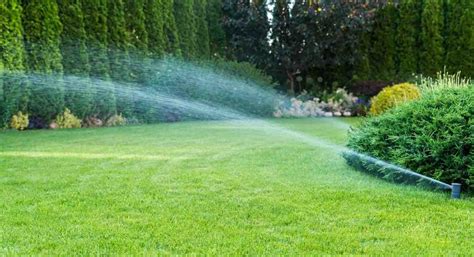Overseeding: Perfect Watering for a Healthy Lawn
Overseeding, the process of sowing new grass seed into an existing lawn, is a fantastic way to thicken your turf, improve its color, and boost its resilience against weeds and disease. However, the success of overseeding hinges heavily on proper watering. Getting this right is crucial for seed germination and the establishment of a strong, healthy lawn. This guide will delve into the optimal watering techniques for a successful overseeding project.
Why is Proper Watering Crucial After Overseeding?
Consistent and appropriate watering is paramount for several reasons:
- Germination: Grass seeds require sufficient moisture to germinate. Dry soil prevents the seeds from absorbing the water necessary to sprout.
- Root Development: Once germinated, young seedlings need consistent moisture to develop robust root systems. Strong roots are essential for a healthy, drought-tolerant lawn.
- Disease Prevention: Proper watering helps prevent fungal diseases that can thrive in excessively wet or dry conditions. Maintaining consistent soil moisture discourages fungal growth.
- Competition Suppression: Adequate watering helps the new seedlings compete effectively with existing grass and weeds for resources.
How Often Should I Water After Overseeding?
The frequency of watering depends on several factors, including:
- Soil Type: Sandy soils drain quickly and require more frequent watering than clay soils, which retain moisture longer.
- Climate: Hot, dry climates necessitate more frequent watering than cooler, more humid climates.
- Seed Type: Different grass species have varying water requirements. Refer to the seed packaging for specific recommendations.
General Guideline: Aim for consistently moist, but not soggy, soil. The top inch or two of soil should feel moist to the touch. Avoid letting the soil completely dry out, especially during the crucial germination phase.
How Much Water Should I Use After Overseeding?
Overwatering can be as detrimental as underwatering. Excessive water can drown seeds and wash away nutrients. Instead of focusing on the amount of water, focus on the frequency and soil moisture.
- Light and Frequent: Instead of deep, infrequent watering, opt for light and frequent watering sessions. This encourages shallow root development, making the new grass more drought-tolerant in the long run.
- Early Morning: Water early in the morning to minimize evaporation. This allows the water to penetrate the soil effectively before the sun's heat evaporates it.
- Avoid Runoff: If you see water running off the lawn, you are watering too heavily. Adjust the watering duration and frequency to prevent runoff.
What are the Signs of Improper Watering After Overseeding?
Recognizing the signs of improper watering is crucial for adjusting your approach:
- Seed Failure to Germinate: If seeds fail to germinate, it likely indicates insufficient moisture.
- Yellowing or Browning Seedlings: Yellowing or browning seedlings can indicate either underwatering or overwatering.
- Shallow Root Systems: Poor watering leads to weak, shallow roots, making the lawn more susceptible to stress.
- Weed Growth: Weeds often thrive in poorly watered lawns, outcompeting the new seedlings.
How Long Should I Water After Overseeding?
The duration of watering depends on the seed type, soil type, and climatic conditions. As a general guideline, continue consistent watering until the new grass is well-established, typically 4-6 weeks after overseeding. Once the new grass is 2-3 inches tall, you can gradually reduce the frequency of watering.
What is the Best Watering Method After Overseeding?
While sprinklers can be used, a gentle spray nozzle on a hose provides more even moisture distribution, especially critical during the germination phase. Avoid high-pressure sprays that can dislodge seeds.
Should I Use a Watering Can After Overseeding?
Using a watering can is a good option for smaller areas, particularly for the initial watering after seeding, ensuring the seeds make good contact with the soil. For larger areas, a sprinkler system or hose-end sprayer might be more efficient.
How Do I Know When My Overseeded Lawn is Established?
Your overseeding project is successful when the new grass is visibly dense, actively growing, and able to withstand brief periods of dry weather without wilting. This usually takes several weeks.
By following these guidelines, you will significantly improve your chances of a successful overseeding project, leading to a lush, healthy, and vibrant lawn. Remember to adjust your watering practices based on your specific circumstances and monitor your lawn’s progress closely. A little attention to detail in watering goes a long way!

